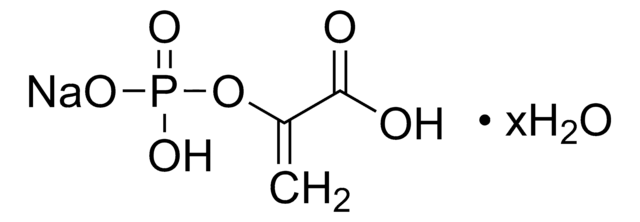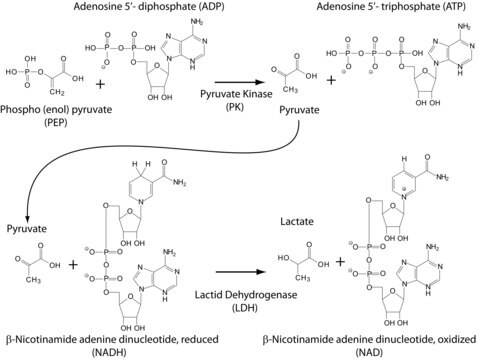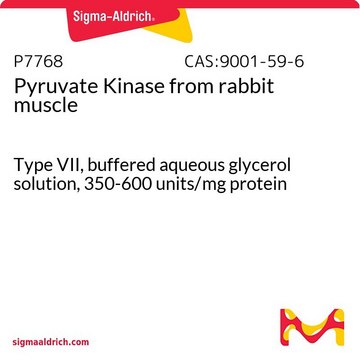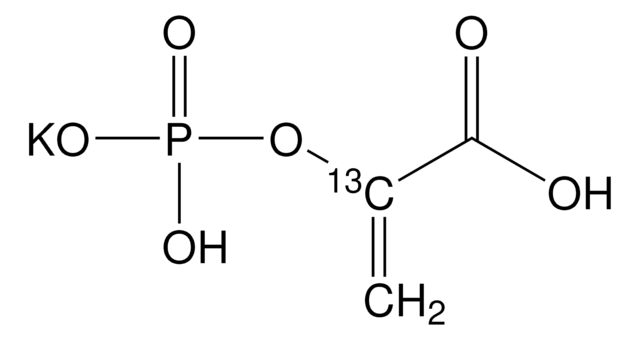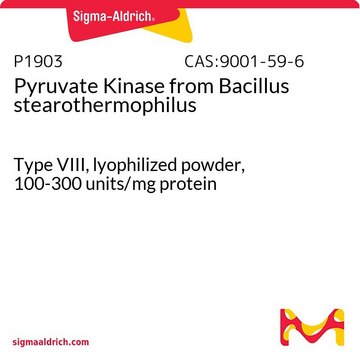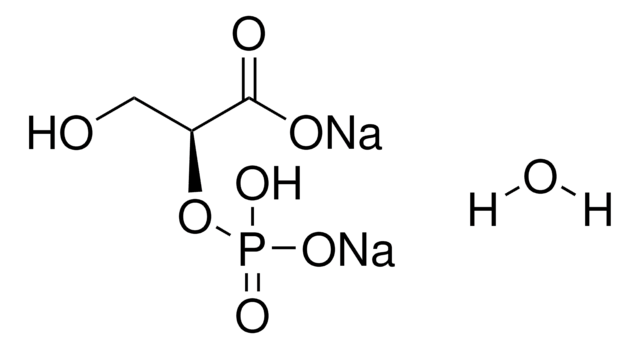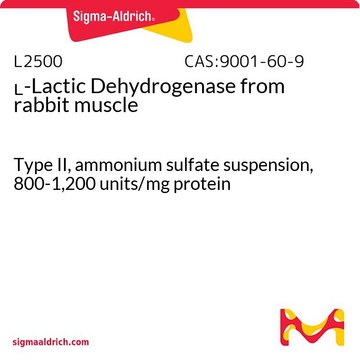P7127
Phospho(enol)pyruvic acid monopotassium salt
≥97% (enzymatic), powder
Sinónimos:
2-(Phosphonooxy)-2-propenoic acid monopotassium salt, mono-Potassium phosphoenolpyruvate, PEP-K
About This Item
Productos recomendados
product name
Phospho(enol)pyruvic acid monopotassium salt, ≥97% (enzymatic)
Quality Level
assay
≥97% (enzymatic)
form
powder
solubility
water: 100 mg/mL, clear, colorless
storage temp.
−20°C
SMILES string
[K+].OC(=O)C(=C)OP(O)([O-])=O
InChI
1S/C3H5O6P.K/c1-2(3(4)5)9-10(6,7)8;/h1H2,(H,4,5)(H2,6,7,8);/q;+1/p-1
InChI key
SOSDSEAIODNVPX-UHFFFAOYSA-M
¿Está buscando productos similares? Visita Guía de comparación de productos
General description
Application
- to maintain a constant concentration of adenosine triphosphate (ATP) for active gel assembly
- as a component in assay buffer for in vitro ATPase assay
- as a stock solution for optical trapping assay
Biochem/physiol Actions
Storage Class
13 - Non Combustible Solids
wgk_germany
WGK 3
flash_point_f
Not applicable
flash_point_c
Not applicable
ppe
Eyeshields, Gloves, type N95 (US)
Certificados de análisis (COA)
Busque Certificados de análisis (COA) introduciendo el número de lote del producto. Los números de lote se encuentran en la etiqueta del producto después de las palabras «Lot» o «Batch»
¿Ya tiene este producto?
Encuentre la documentación para los productos que ha comprado recientemente en la Biblioteca de documentos.
Los clientes también vieron
Artículos
Review the 10 steps of glycolysis in the Embden-Meyerhof-Parnas glycolytic pathway. Easily compare reaction stages and buy the enzymes for your life science research.
We presents an article about the Warburg effect, and how it is the enhanced conversion of glucose to lactate observed in tumor cells, even in the presence of normal levels of oxygen. Otto Heinrich Warburg demonstrated in 1924 that cancer cells show an increased dependence on glycolysis to meet their energy needs, regardless of whether they were well-oxygenated or not.
Nuestro equipo de científicos tiene experiencia en todas las áreas de investigación: Ciencias de la vida, Ciencia de los materiales, Síntesis química, Cromatografía, Analítica y muchas otras.
Póngase en contacto con el Servicio técnico

